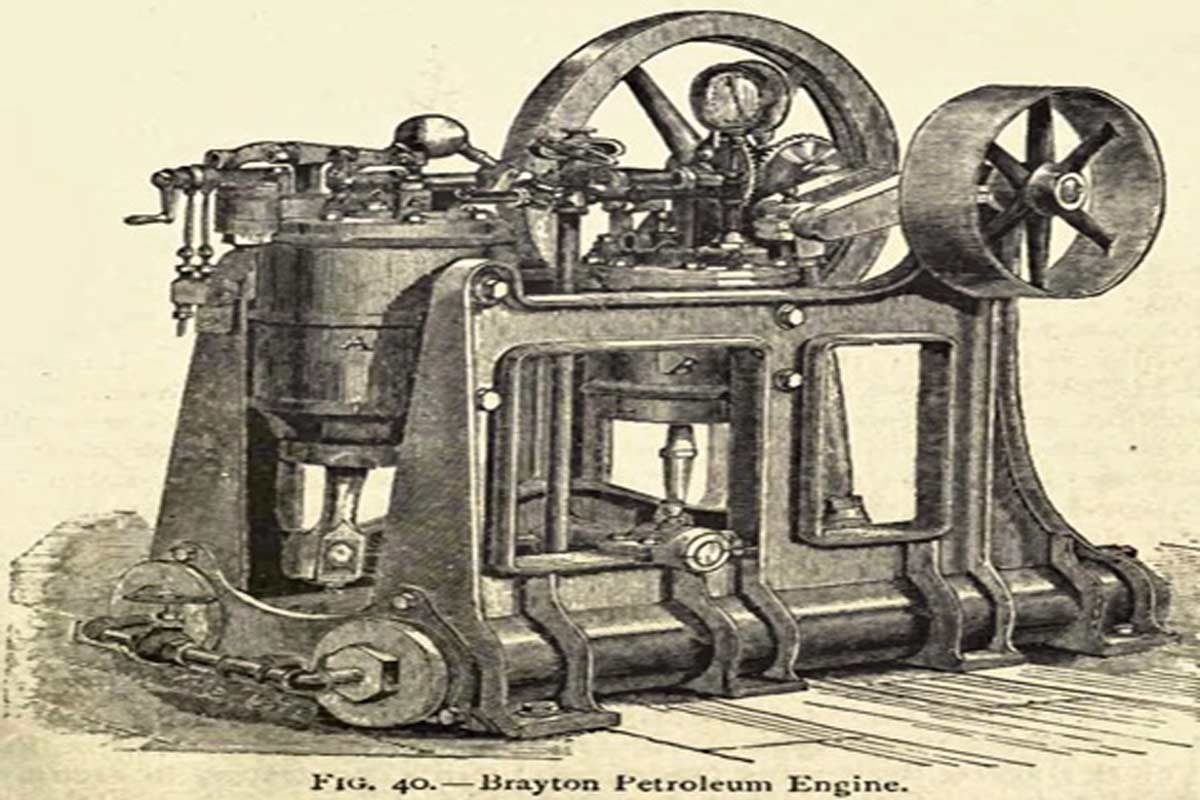
Engines have long been used for the production of useful energy to do work, such as pumping water and driving a vehicle. The common theme, however, is the utilization of the combustion of substances to provide either heat or expanding gasses.
External vs. Internal Combustion Engines
The external combustion engine uses the burning of fuel to indirectly heat the substance doing the work. The steam engine is the basic external combustion engine — a fire boils water in a tank, the steam produced is then channeled into a cylinder where it does the work. An internal combustion engine, by contrast, relies on the burning of fuel in a combustion chamber where the expanding gasses do work.
The History of the Internal Combustion Engine
The internal combustion engine has been around for a long time; the modern version of the engine is now over a century old. Versions of the internal combustion engine were being proposed as early as the 1600s. Those models used gunpowder for fuel, and were designed to pump water — but were never built. How to ignite the gunpowder and then to keep the engine running in a controlled fashion proved to be an insurmountable difficulty.

Over a century later, George Brayton was born on October 3, 1830. Brayton pioneered the first successful (and safe) oil-powered engine. Brayton’s engine compressed air and then sent it into the combustion chamber, which had twice the volume of the compression chamber. On its way to the combustion chamber, the air passed through a fuel-soaked “absorbent material,” and picked up fuel vapors on its way. The fuel could be either gasoline or kerosene — kerosene was preferred, as gasoline proved to be a little too unstable for the Brayton engine. The fuel/air mixture was ignited by a pilot flame that was kept burning in the combustion chamber, and then the gas produced by combustion forced the piston down, where the momentum of the engine then pushed it back up again for another combustion stroke. As these engines weighed an enormous amount they were mostly used for stationary purposes, although they occasionally found their way into an automobile or two.
The Four-Cycle Internal Combustion Engine
The modern four-cycle engine uses two valves and a piston. First a valve opens, allowing the fuel/air mixture into the engine. The valve closes, and the mixture is compressed by the cylinder. A spark, produced by a spark plug in the top of the engine, ignites the mixture once it is fully compressed. The mixture expands drastically, forcing the cylinder down, and the other valve opens allowing the exhaust to escape.
This engine, invented in the 1800s, is still employed to this day, being one of the premier engines of all time. Although it is not the Brayton engine, there can be no doubt that Brayton’s patent for the first commercial gas-powered internal combustion engine laid the groundwork for the safe and practical use of oil products for fuel.
Further Investigation
George Brayton
Biography from the American Society of Mechanical Engineers.
History of the Internal Combustion Engine
This 4-page document includes a great timeline.
How an Engine Works — Animation
Excellent explanation of how the internal combustion engine works.
(You may want to install an ad blocker before viewing.)
Brief History of the Internal Combustion Engine
From the 1600s to the modern 4-cycle.
Brayton Cycle
How Brayton’s work is still being used today.
History of Engines
How a modern internal combustion engine works.
Activities
Two Stroke Engine
Interactive animation and explanations.
Four Stroke Engine
Interactive animation and explanations.
How to Change Your Oil
Step-by-step instructions for something everyone probably should know how to do!
Books
A Power Primer
Excellent introduction for younger students from General Motors. Free.
Internal Combustion Engine Manual
Public domain work that explains the four parts of the engine in easy-to-understand language.

Gas and Petroleum Engines {Free eBook}
Public domain work that takes a practical, hands-on view. Many helpful illustrations for the history buff.
Practical Hand Book of Gas, Oil, and Steam Engines by John Rathbun
Everything you need to know in this public domain work.
Unit Studies & Lesson Plans
The Internal Combustion Engine and Its Importance to Agriculture
Lesson plan from Urbana High School in Illinois with great background information.
Internal Combustion Engines
Course that is part of MIT’s OpenCourseware program.
Printables & Notebooking Pages

2-Cycle Engine
Diagram for notebook.

4-Cycle Engine
Diagram for notebook.
Internal Combustion Engine Notebooking Pages
Simple pages for copywork, narrations, or wrapping up.
Ready for More?
You might also enjoy these related units:










You must be logged in to post a comment.